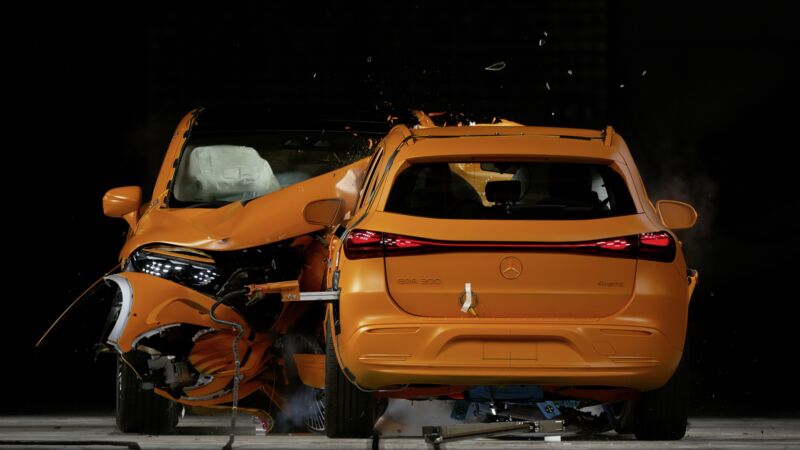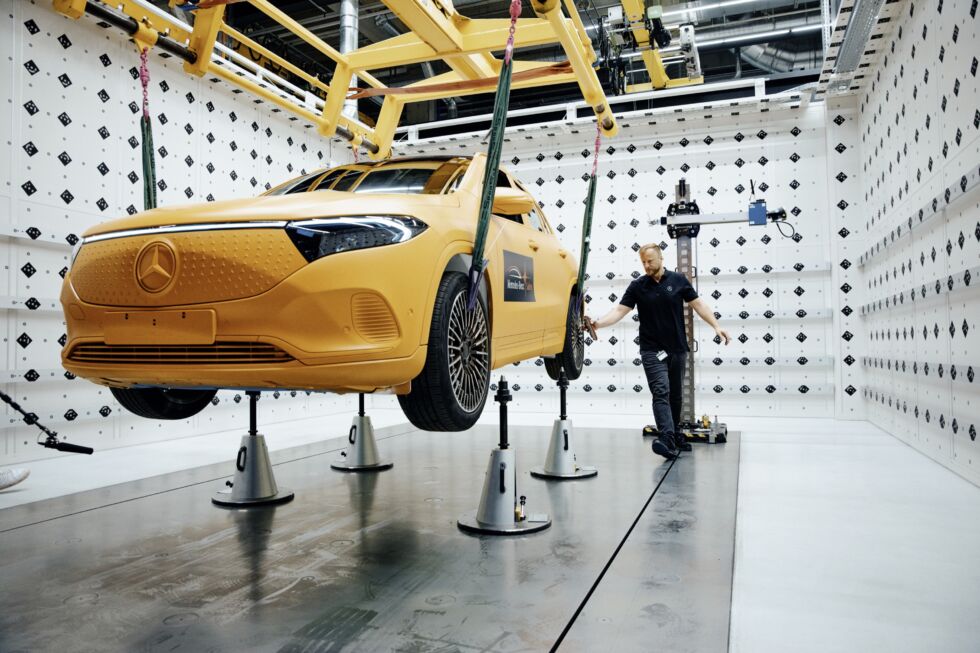
Mercedes-Benz
Something unexpected happened as I looked down to watch two Mercedes-Benz EVs crash into each other: I felt… scared.
It was the culmination of a day spent with Mercedes-Benz discussing the company’s plans to fully prevent serious injuries in its vehicles and the first time an automaker publicly conducted a crash test between two EVs, in this case with a select group of journalists in attendance. Witnessing two cars smash into each other would be, at the very least, very exciting.
But I didn’t expect to feel my stomach drop in the moment of impact and the dread that lingered after. The experience hammered home the importance of all the safety measures automakers implement in the cars we spend our lives with and how much work goes into engineering the successful outcomes we hope we never have to experience firsthand.
Crash course
I was among a handful of journalists Mercedes-Benz brought to its Technology Center for Vehicle Safety in Sindelfingen, Germany, a substantial testing facility where the automaker conducts its crash tests throughout the year. The goal was to demonstrate that a collision involving such vehicles is no worse than what we see with gas-powered vehicles. This kind of test goes beyond the standards used by organizations who rate vehicle safety, company spokespeople were keen to point out.
Before the test, we had multiple sessions with specialists from the tech center who walked us through different aspects of Mercedes-Benz’s approach to vehicle safety while reiterating its “Mission Zero” goal to eliminate car crashes in its vehicles by the year 2050.

Mercedes-Benz
Yes, completely. Paul Dick, director of vehicle safety at Mercedes-Benz, claimed there are currently 1.3 million annual road fatalities worldwide. He equates this to 12 large commercial planes full of people crashing every day for a year, a figure he finds unacceptable. Dick hopes that with the ambitious 2050 target in its sights, Mercedes-Benz can significantly reduce in-car fatalities per every milestone on the way.
Safety dance
The way forward is to prevent incidents before they happen, and to be fully prepared if/when they do. A major factor in this vision is autonomous vehicle functions, as discussed around the cars from the Mercedes-Benz ESF (Experimental Safety Vehicles or Experimentelles Sicherheitsfahrzeug) program, which houses many of the prototypical versions of the automaker’s safety innovations. ESF 2019, in particular, showcased many possible solutions for autonomous road safety, such as implementing ways to communicate with other drivers and passengers of what the vehicle may be doing while in self-driving mode, using LED screens on the rear windshield to display messages to following cars, and even indicating that its occupant is literally sleeping behind the wheel.
Specialists then walked us through the brand’s four stages of its approach to crash safety.
Stage one is assistance, provided by functions like emergency braking and blind-spot monitoring. Stage two is preparation for when the car’s “safety brain” senses an imminent collision, engaging systems like seat-belt tensioners and prepping the airbags for deployment.
Stage three, airbag deployment, is about protection, and stage four is helping in post-collision situations with automatic hazard lights, calling emergency centers, and—with EVs—automatically shutting down the high-voltage system, allowing responders to safely access the vehicle. Our specialist pointed out that emergency responders procedurally disconnect the battery at the start of a rescue in a gas-powered car and that Mercedes provides a wire for them to cut in its EVs for the same purpose.

